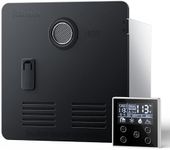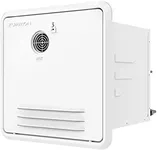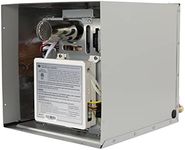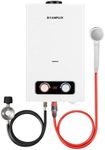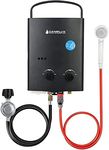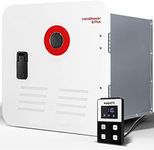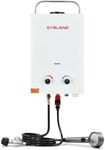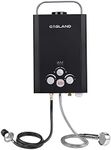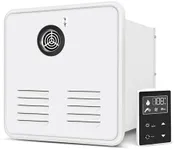Buying Guide for the Best Rv Tankless Water Heaters
Choosing the right RV tankless water heater can make your travels much more comfortable by providing hot water on demand without the wait or the bulk of a traditional tank. The key is to match the heater’s capabilities to your RV lifestyle, considering how many people will use hot water, how often you’ll need it, and the types of climates you’ll be traveling in. Understanding the main features and how they impact performance will help you make a smart, satisfying choice.Flow Rate (Gallons Per Minute, GPM)Flow rate tells you how much hot water the heater can deliver at once, measured in gallons per minute (GPM). This is important because it determines whether you can run multiple fixtures (like a shower and a sink) at the same time without losing hot water. Lower flow rates (1-2 GPM) are suitable for solo travelers or couples who use water one fixture at a time, while higher flow rates (3 GPM or more) are better for families or those who want to use several fixtures simultaneously. Think about your typical water use in the RV to decide what flow rate fits your needs.
Fuel Type (Propane, Electric, or Hybrid)Tankless water heaters for RVs can run on propane, electricity, or a combination of both. Propane models are popular for their efficiency and ability to work off-grid, making them ideal for boondocking or camping without hookups. Electric models are easier to install and maintain but require a reliable power source, which is best for RVers who stay at campgrounds with full hookups. Hybrid models offer flexibility but may be more complex. Consider where and how you camp most often to choose the fuel type that matches your travel style.
Size and Installation RequirementsThe physical size of the heater and its installation needs are crucial because RVs have limited space. Some units are compact and designed for easy retrofit into existing spaces, while others may need more room or special venting. Check the dimensions and installation instructions to ensure the heater will fit in your RV and that you can meet any venting or clearance requirements. If you have a smaller RV or limited installation skills, look for models that are specifically labeled as easy to install or designed for tight spaces.
Temperature Control and StabilityTemperature control refers to how precisely you can set and maintain your desired water temperature. Some heaters offer digital controls and sensors for consistent temperatures, while others may have manual dials and can fluctuate, especially with changes in water flow or incoming water temperature. If you value comfort and want to avoid sudden bursts of cold or hot water, look for models with advanced temperature controls and safety features. This is especially important for families with children or anyone sensitive to temperature changes.
Minimum Activation Flow RateThis spec tells you the minimum amount of water flow needed to trigger the heater to turn on. A lower activation flow rate means the heater will work even with a trickle of water, which is useful for low-flow fixtures or conserving water. If you often use low-flow faucets or want to save water, choose a heater with a low minimum activation flow rate. If you always use standard fixtures, this may be less critical.
Cold Weather PerformanceSome tankless water heaters are designed to handle colder incoming water, which is important if you travel in cold climates. Features like freeze protection or the ability to heat very cold water quickly can make a big difference in performance. If you plan to camp in the winter or in places with cold water supplies, look for models that specifically mention cold weather or freeze protection. If you stick to warm climates, this feature may not be as important.
